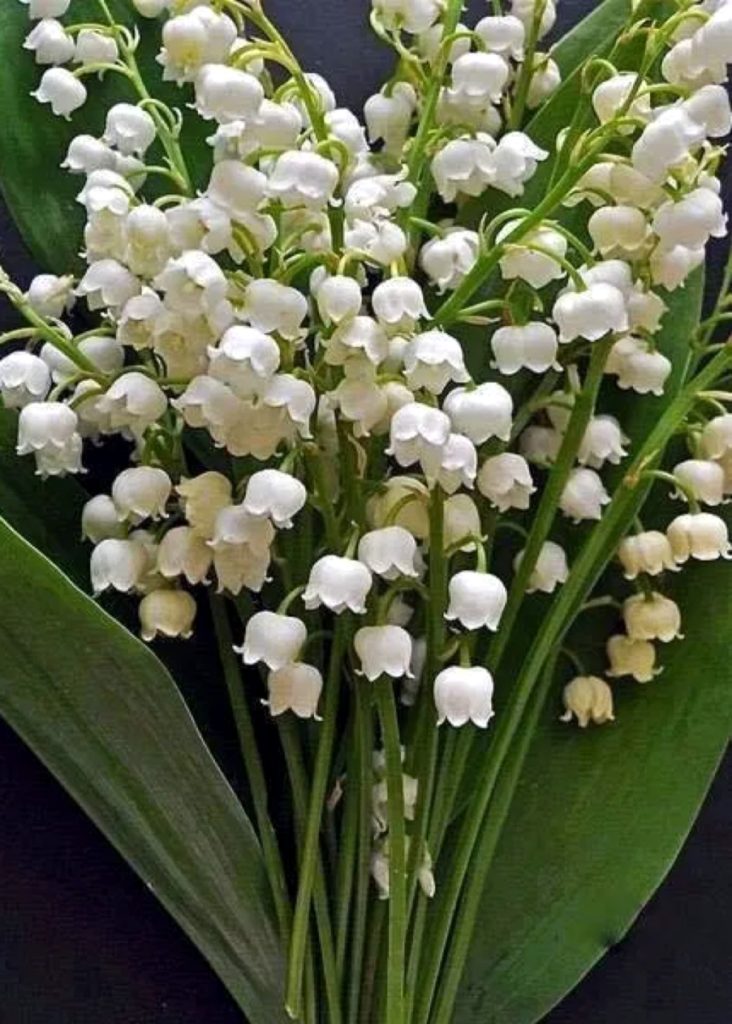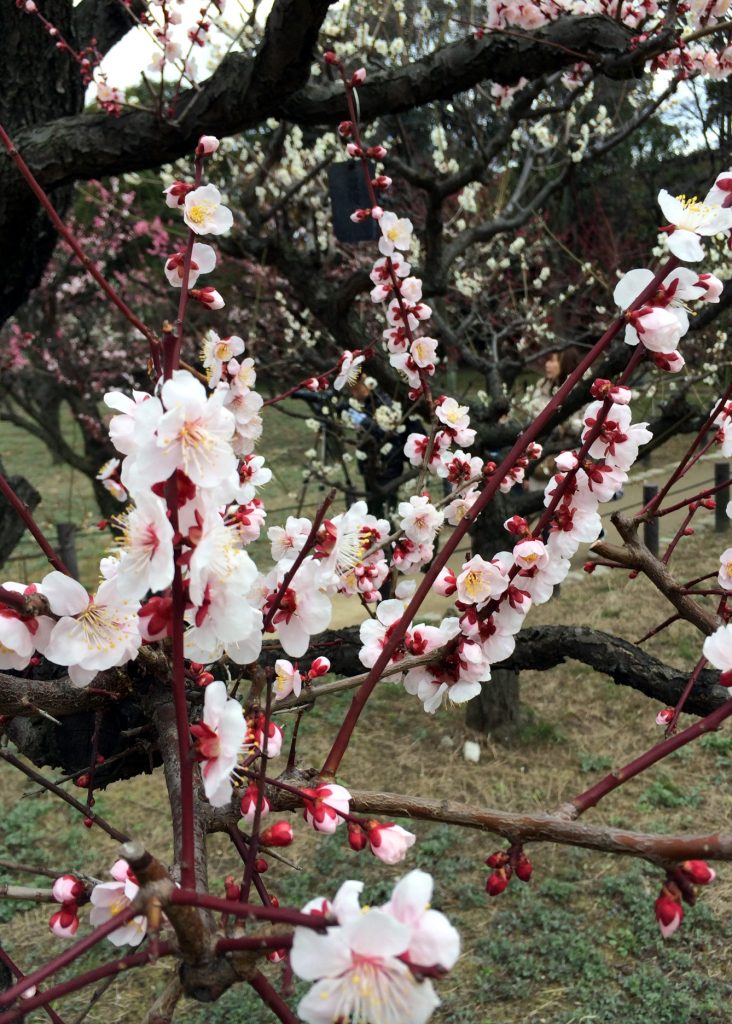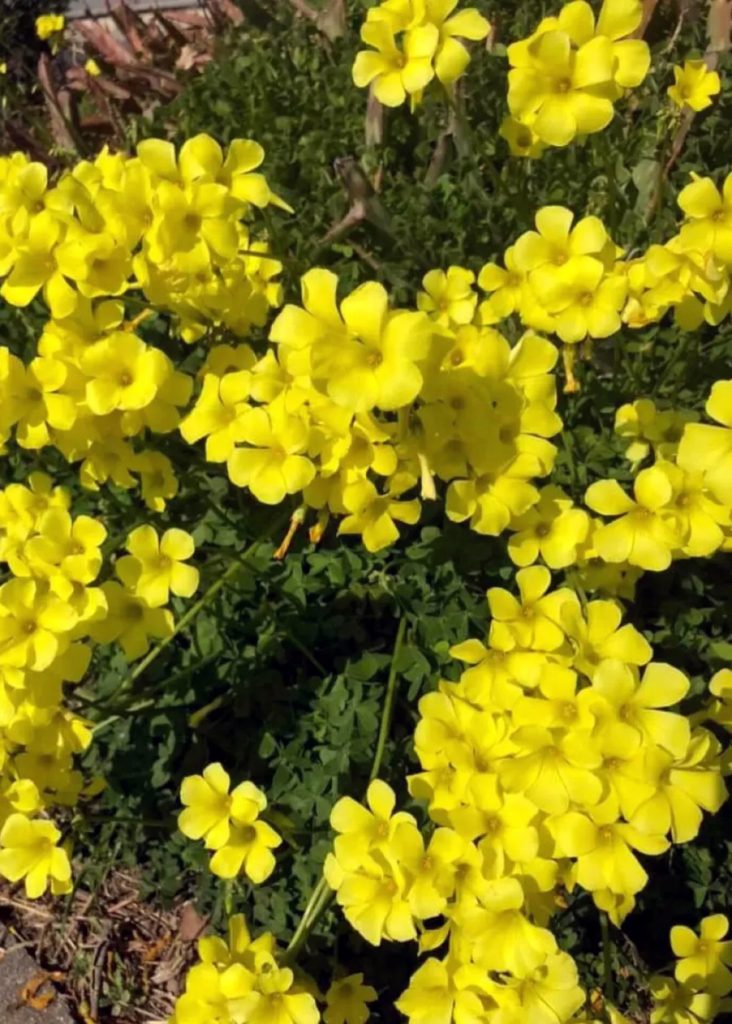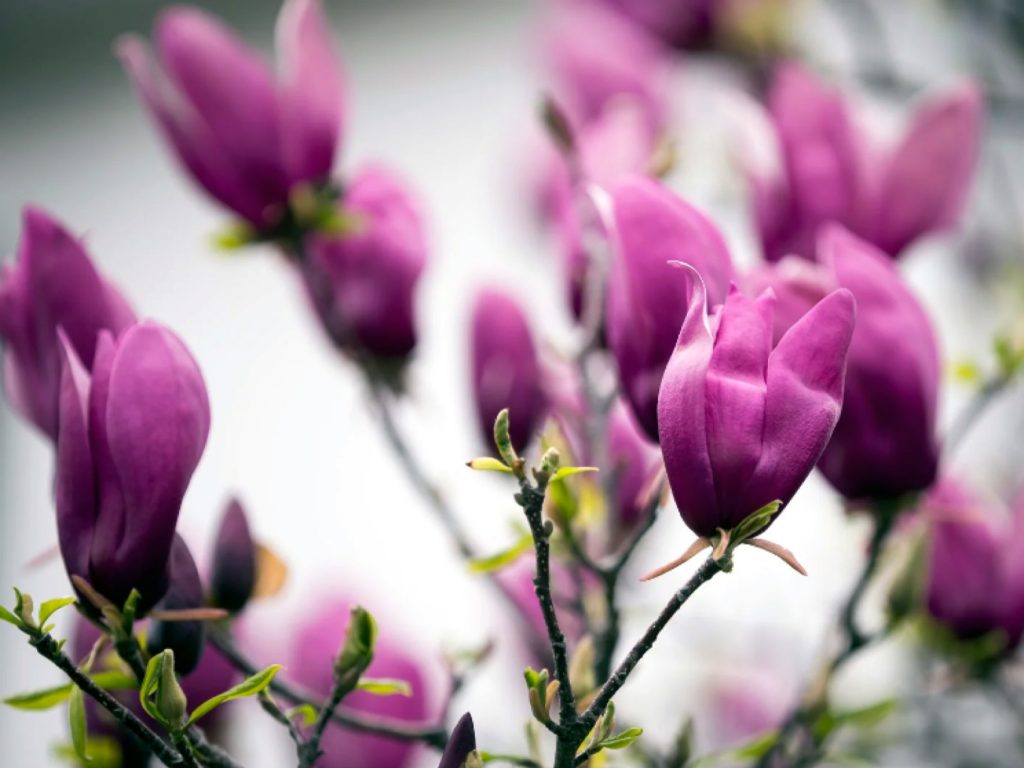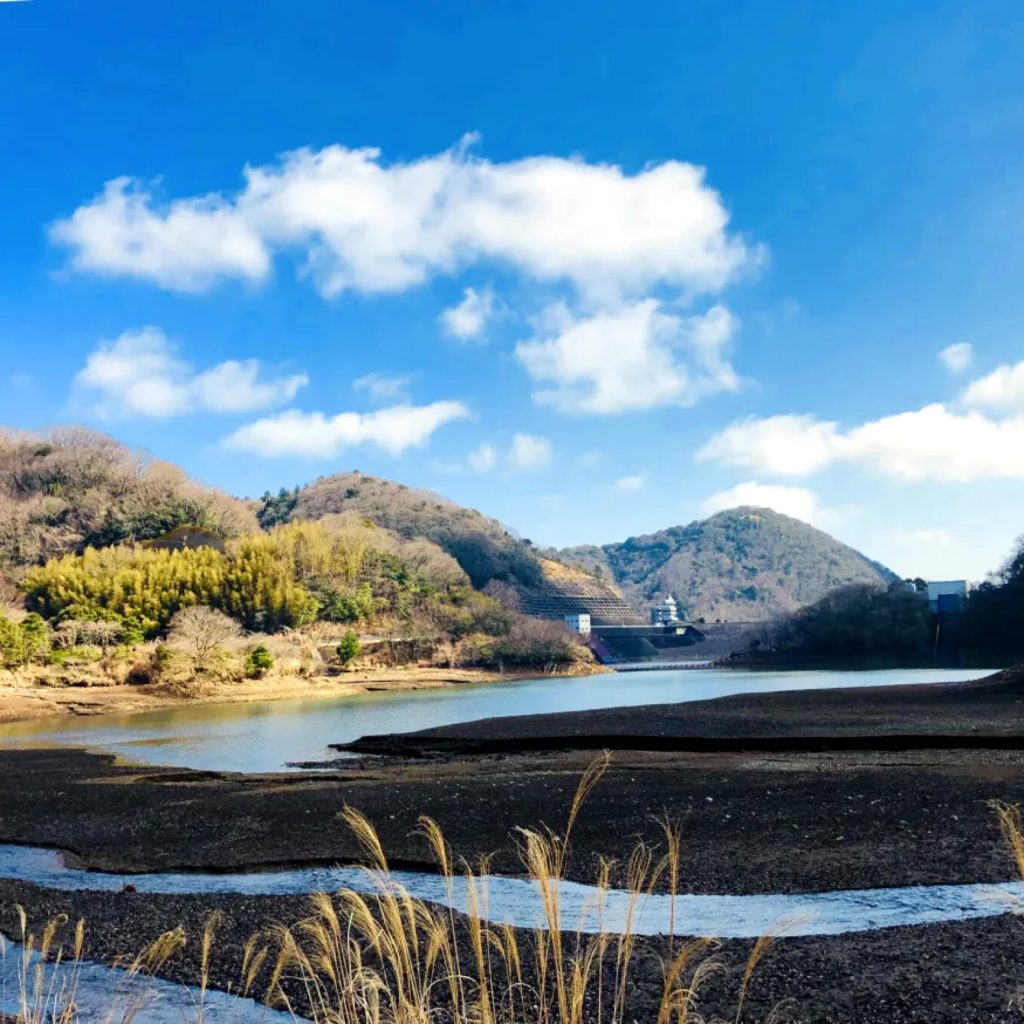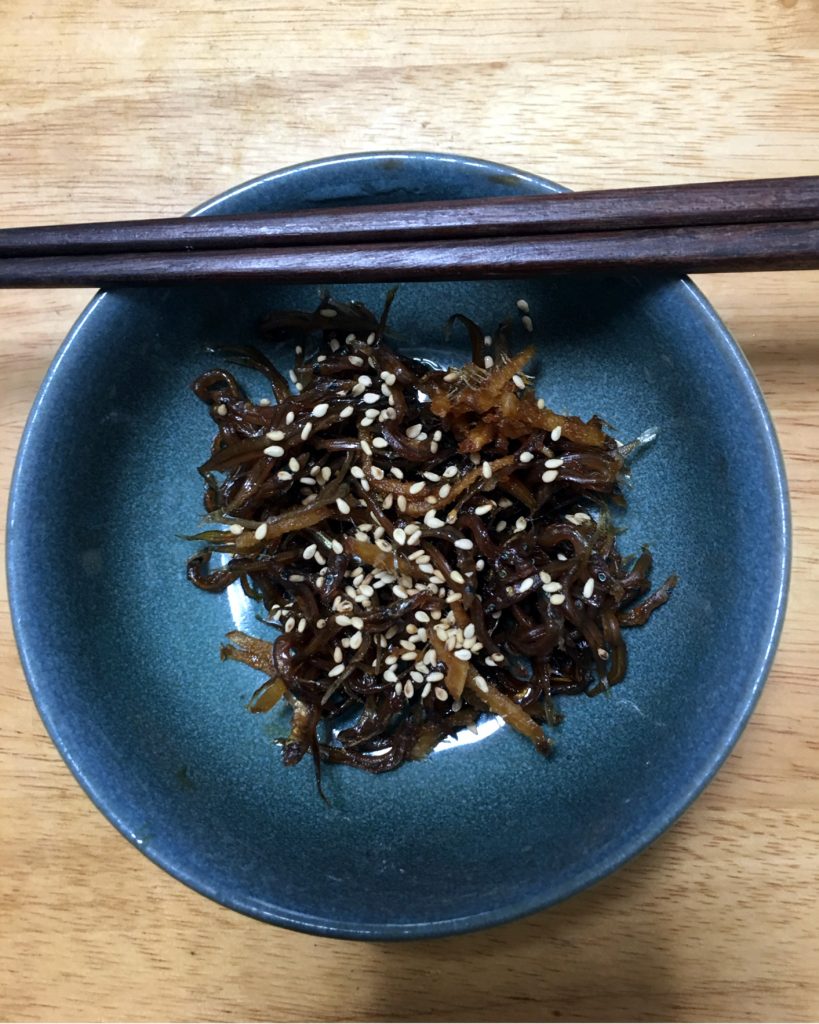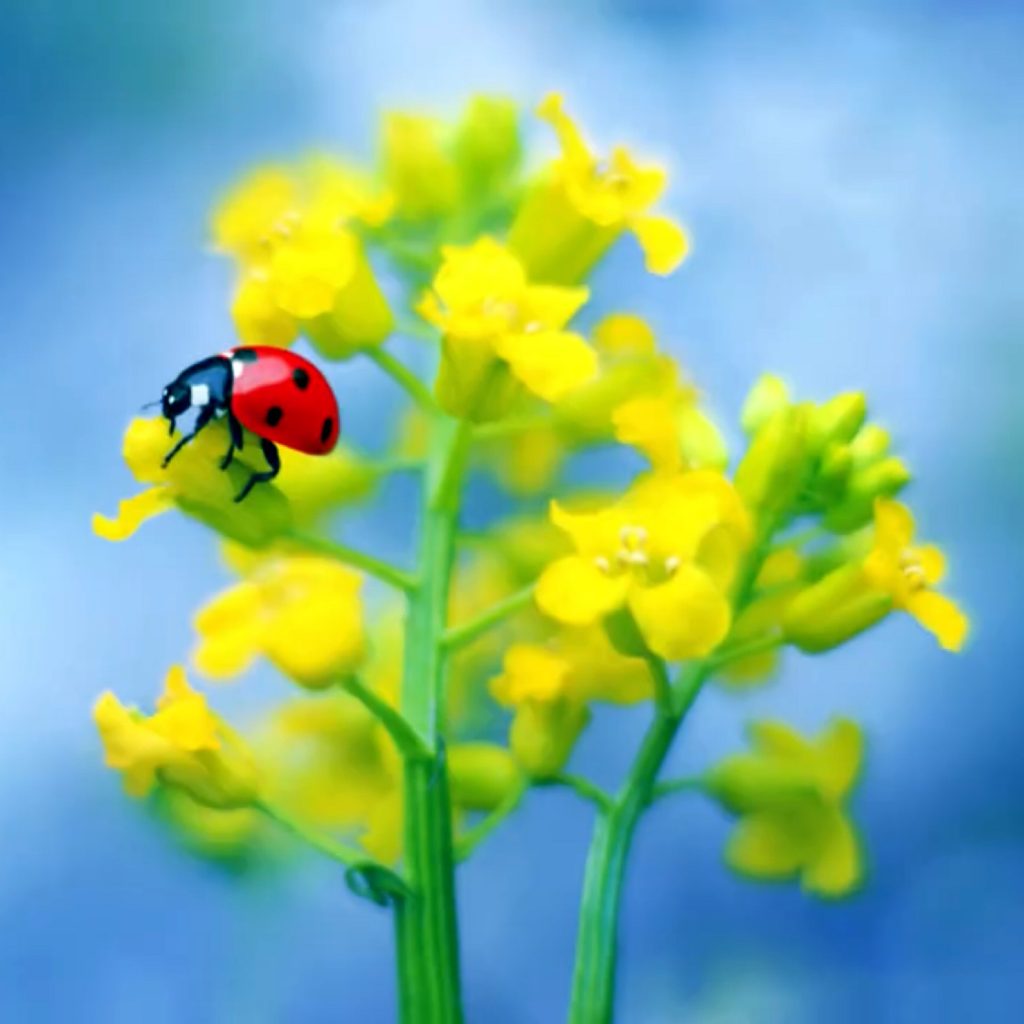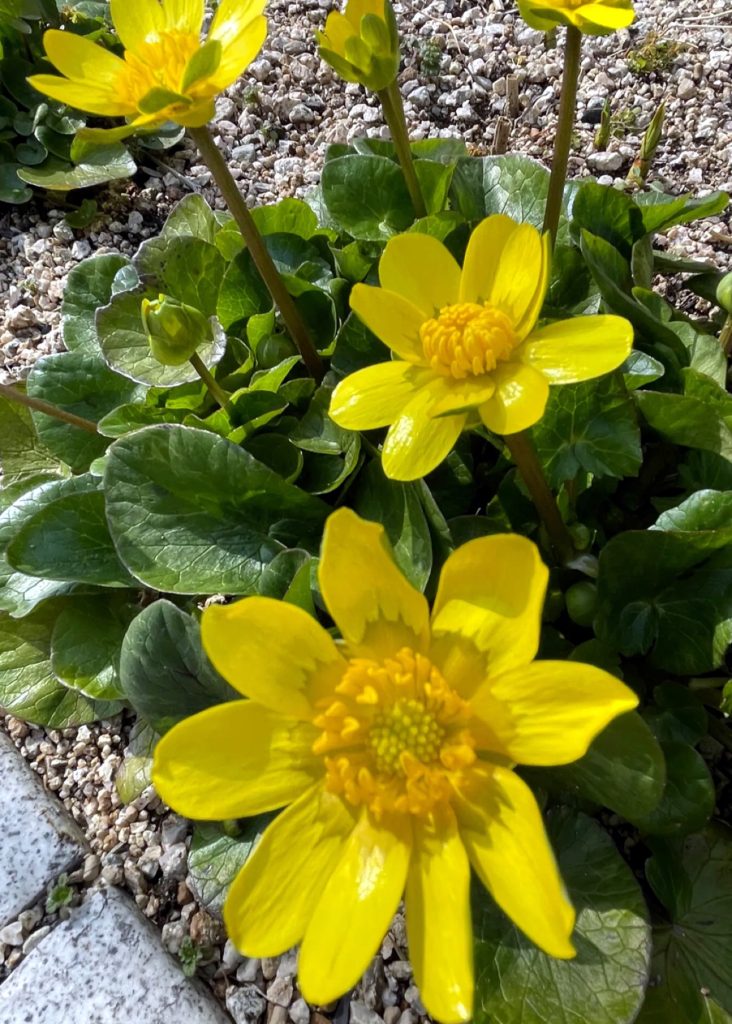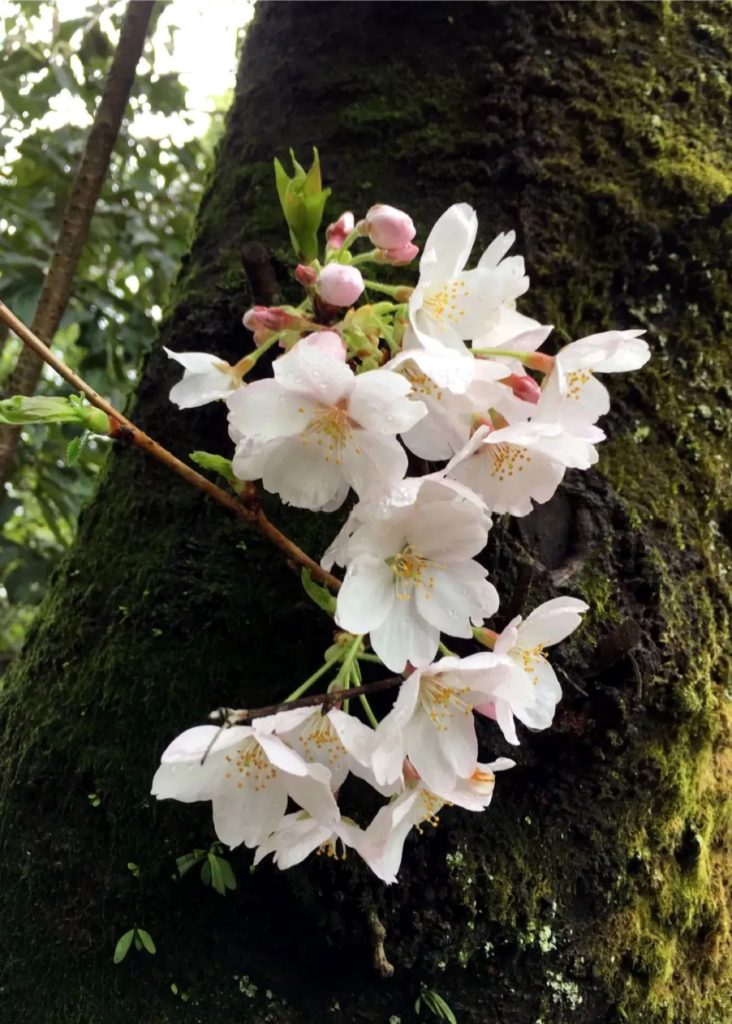
There is a cherry tree where the flowers are blooming at the bottom of the cherry tree trunk, where the buds are still hard. It is called Mikizakura or Douzakizakura. This year’s cherry blossoms are said to bloom around 20 days ago, so they bloom quite early. This phenomenon is attributed to the aging process of the cherry tree, occurring exclusively in older trees. When the cherry tree awakens from its winter slumber and attempts to bloom, it requires more energy. However, in aging cherry trees with diminishing vitality, even with branches reaching into the sky for respiration and photosynthesis, they struggle to obtain sufficient nutrients. When nutrients no longer circulate well in the trunk, which serves as the foundation, the supporting strength diminishes, and the risk of the tree falling increases. Hence, in response to this predicament, the older tree directly sprouts branches from the trunk to bloom flowers and quickly produces leaves for photosynthesis. This is believed to be the cause of the ‘Douzakizakura’ phenomenon. It’s the story sympathized deeply for me. However, after a little while, the flowers will bloom again, so I’m jealous of them.
まだ蕾も硬い幹の下の部分に花を咲かせている桜の木があります。幹桜とか胴咲き桜というそうです。今年の桜の開花は20日前後だそうですから、随分早く咲いたものです。これは桜の木の加齢現象で、老木にだけ起こります。桜が冬の眠りから覚め、花を咲かせるにはより多くのエネルギーを必要とします。しかし、勢いが衰えた桜の老木は、上空に伸びた枝で呼吸をし、光合成を行っても養分が充分に取れなくなります。土台である樹の幹に栄養が回らなくなると支える力が失われ、倒木の恐れも出てきます。だから、「これは大変だ!」ということで、老木は幹から直接小枝を出して花を咲かせ、葉を早く出して光合成をしようとします。これが胴咲き桜が咲く原因だと考えられています。見につまされる話です。しかし、少しすればまた立派に花を咲かせるわけですから、羨ましいといえば羨ましいことです。

